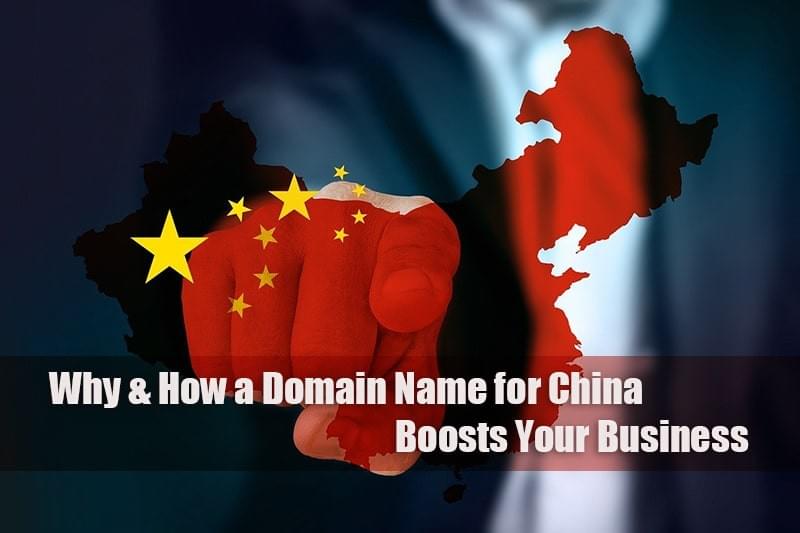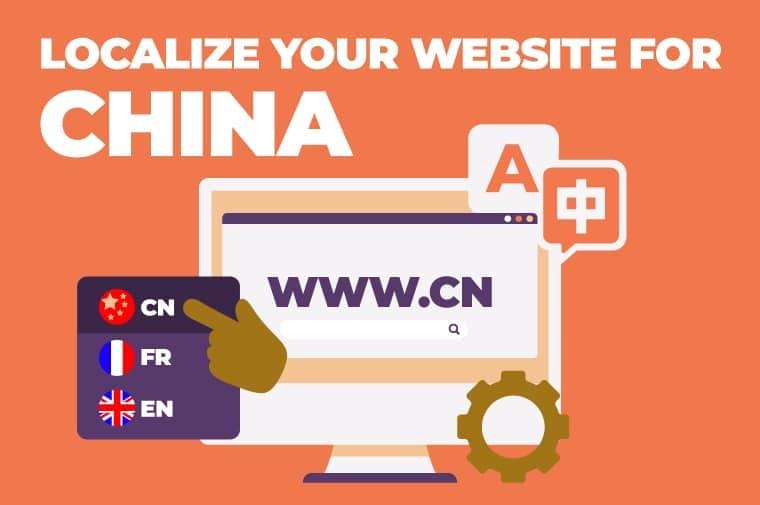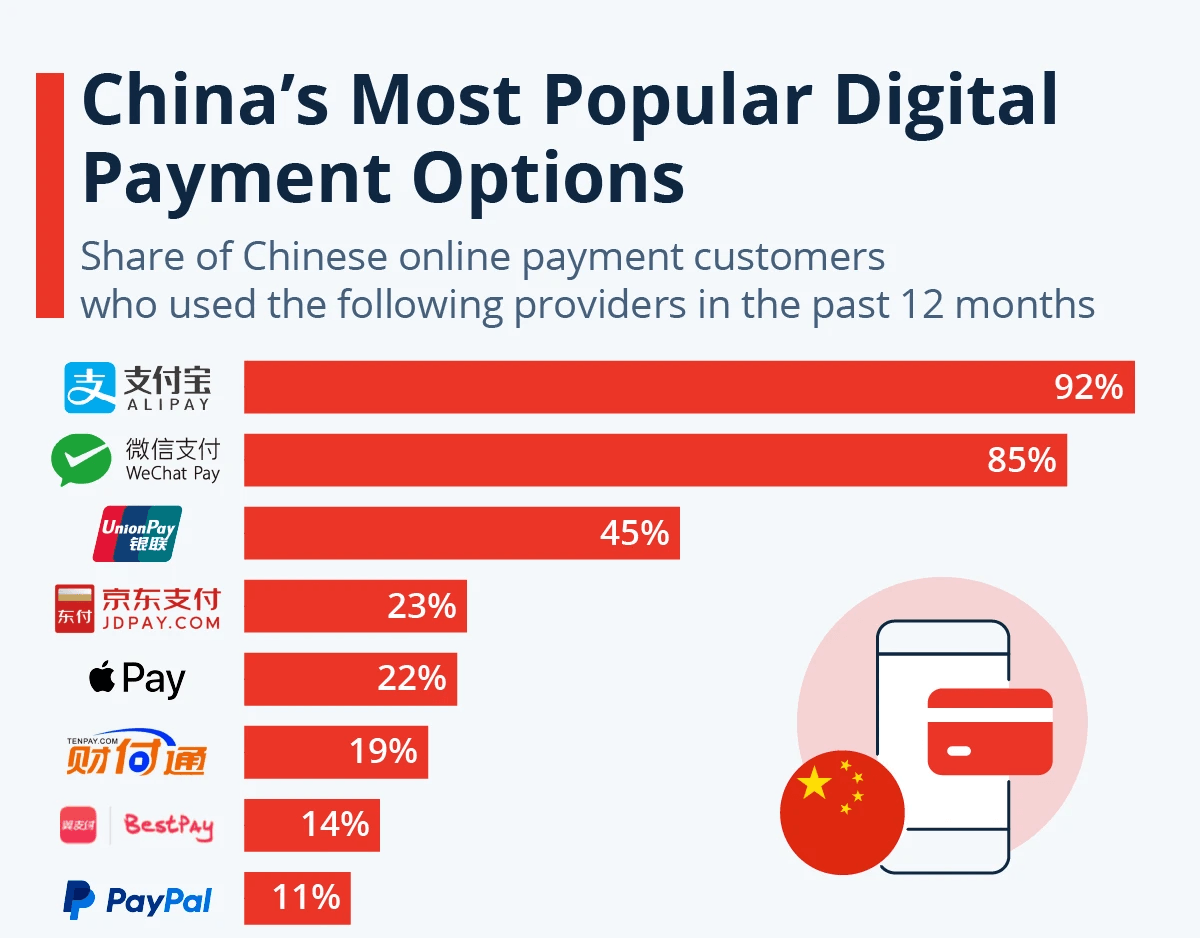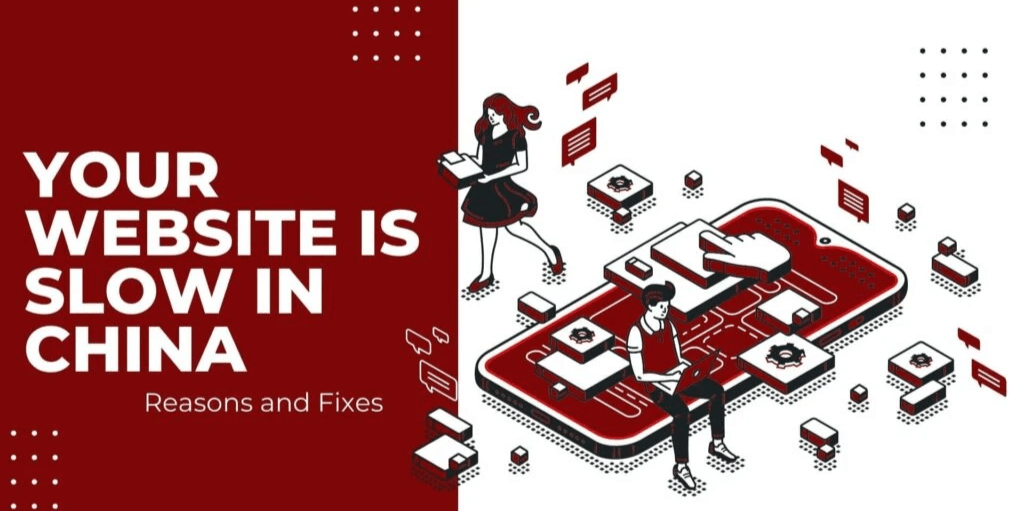Introduction: So You Want to Enter the Digital Forbidden City
Congratulations on your decision to localize your website for China! You've just volunteered to play the digital equivalent of "The Floor is Lava," except the floor is also bureaucracy, the lava is regulation, and the prizes are 1.4 billion potential customers who have never heard of your brand and might not care unless you follow a completely different set of rules than everywhere else in the world.
China's digital ecosystem isn't just different—it's an alternate universe where Google doesn't exist, loading speeds are measured in "frustrations per second," and your meticulously developed global website template is about as useful as a chocolate teapot. The Great Firewall isn't just a cute nickname—it's an elaborate digital bouncer that keeps out Facebook, YouTube, Twitter, and probably that JavaScript library your developer swears is essential to your website's functionality.
Did you know? Over 1 billion Chinese users access the internet through mobile devices, making desktop optimization about as relevant as a floppy disk at a blockchain conference.
This guide will walk you through the seven essential practices for website localization in China, covering everything from necessary permits (spoiler alert: you need them) to technical infrastructure (another spoiler: your AWS account won't cut it here). Buckle up—it's going to be a bureaucratically wild ride.

Understanding China's Digital Landscape in 2025: It's Not Just Different, It's a Parallel Universe
The Great Firewall: China's Digital Bouncer
China's internet is regulated by what's euphemistically called the "Great Firewall"—a sophisticated system that makes entering the Chinese digital market about as straightforward as explaining quantum physics to a goldfish.
This system enthusiastically blocks:
- Google services (meaning your Google Analytics is now as useful as a sunroof on a submarine)
- Facebook, Instagram, Twitter, YouTube (so much for your social media strategy)
- Most Western news sites (goodbye, content references)
- Dropbox, OneDrive, and similar services (your cloud just evaporated)
Chinese User Preferences: More is More
If you thought minimalist design was universal, prepare for cognitive dissonance:
- Information density: Chinese websites typically display more information on a single page than an entire Western website. Think "digital maximalism" where horror vacui is not a design flaw but a feature.
- Animation and interactivity: If your website doesn't have at least one thing moving at all times, users might check if their internet is broken.
- Mobile-first approach: With 98% of Chinese internet users on mobile, designing for desktop first is like building a swimming pool in the Sahara—technically possible but missing the point entirely.
- Local platform integration: No WeChat or Alipay integration? You might as well put up a "We Don't Actually Want Chinese Customers" sign.

Best Practice #1: Obtain Required Legal Permits (Or How to Make Friends with Chinese Bureaucracy)
ICP Filing and Licensing: Your Digital Passport
Any website hosted in mainland China must have an Internet Content Provider (ICP) filing or license. This is about as optional as gravity—you can ignore it, but the consequences will be immediate and unpleasant.
There are two flavors of ICP credentials:
- ICP Filing (备案 - Beian): The basic "yes, the government knows I exist" documentation
- ICP License (许可证 - Xukezheng): The "yes, I'd like to make money" upgrade package
The application process typically takes about 20 business days, which in bureaucracy-to-human translation means "sometime between next month and when the sun becomes a red giant." You'll need:
- A local Chinese business entity (or a Chinese partner who really, really trusts you)
- A local representative with a Chinese ID (no, your Chinese friend who moved to New York doesn't count)
- Business license and approximately 17 other documents you didn't know you needed
- A server hosting agreement with a Chinese provider who will become your new best friend
Pro tip: Many companies partner with local hosting providers who assist with the ICP application process. This transforms what would be a Kafka-esque nightmare into merely a challenging bureaucratic puzzle.

Best Practice #2: Choose Proper Technical Infrastructure (Because Physics and Politics Both Matter)
Server Location: Closer is Better, Inside is Best
For your website to load in China at speeds that won't make users question their life choices, your servers should be located within mainland China. This isn't just regulation—it's a battle against the laws of physics and digital border control.
Options for hosting include:
- Local Chinese hosting providers (who speak the language of both computers and bureaucracy)
- International providers with data centers in China (fewer than you'd think)
- Cloud services with a Chinese presence (like Alibaba Cloud or Tencent Cloud—think AWS's cousins who followed different career paths)
Domain Strategy: Your Digital Real Estate Address
Consider these options for your domain approach:
- Chinese Top-Level Domain: Register a .cn domain (because nothing says "I'm committed to China" like a .cn domain)
- Second-level domain: Create a cn.yourdomain.com subdomain (the digital equivalent of opening a branch office)
- Standalone Chinese domain: Have a completely separate domain (for when you realize your clever global domain is unpronounceable in Mandarin)
Important: Chinese users prefer typing domain names directly, so having a domain name that doesn't require a linguistics degree to pronounce in Chinese is actually valuable.

Best Practice #3: Optimize Website Performance (Or How to Win the Digital Tortoise and Hare Race)
Website speed in China isn't just important—it's the difference between success and becoming a cautionary tale at digital marketing conferences.
Implement a China-Specific CDN
Standard global CDNs typically work in China about as well as ice skates in the Sahara. Instead:
- Use a China-based CDN with nodes throughout the country
- Providers like Alibaba Cloud CDN, Tencent Cloud CDN, or BaishanCloud understand the local digital topography
- Your regular CDN provider saying "Oh yeah, we cover China too" is the digital equivalent of "I have a friend who visited Beijing once"
Minimize External Dependencies
Many external services commonly used on Western websites are blocked in China, making your beautifully designed site look like Swiss cheese:
- Replace Google Fonts with locally hosted fonts (because waiting for blocked content is everybody's favorite pastime)
- Remove Google Analytics (use Baidu Analytics instead, and enjoy learning a completely new analytics platform)
- Avoid embedded YouTube videos (substitute with Youku or Bilibili, and yes, you'll need new accounts)
- Replace social media sharing buttons (your Facebook button is now as useful as a screen door on a submarine)
Mobile Optimization is Non-Negotiable
With the vast majority of Chinese internet users on mobile devices:
- Implement responsive design prioritizing mobile experience (that desktop-first design is so 2010)
- Optimize image sizes and minimize HTTP requests (every kilobyte counts)
- Consider developing a simplified mobile version (because sometimes less is actually more, despite what we said earlier about Chinese design preferences)

Best Practice #4: Content Localization Beyond Translation (Or Why Google Translate Won't Save You)
Professional Translation and Cultural Adaptation
Simply translating your content word-for-word will produce results ranging from mildly confusing to unintentionally hilarious to potentially offensive. Your content needs to be:
- Professionally translated by native Chinese speakers (not your intern who took Mandarin 101)
- Culturally adapted (because that idiom about "hitting the ball out of the park" makes zero sense in a cricket-less culture)
- Reviewed by local marketing experts (who can tell you why your perfectly innocent slogan accidentally references a political scandal)
Color and Visual Design Considerations
Colors in China carry meanings that might surprise you:
- Red: Symbolizes good luck, joy, and prosperity (use it liberally—it's the digital equivalent of a warm smile)
- Gold: Represents wealth and prosperity (also good, unless your product is positioned as humble and accessible)
- White: Associated with mourning in traditional contexts (that minimalist white website? It might look like a digital funeral to some)
- Black: Can symbolize bad luck or evil (that sleek, modern black background might be sending unintended messages)
Content Structure and Density
Chinese users typically prefer websites that would give Western minimalist designers heart palpitations:
- Higher information density (if there's empty space, someone failed)
- More visually rich interfaces with animations (static is suspicious)
- Detailed product specifications readily available (Chinese consumers research products like they're preparing a doctoral dissertation)
- Multiple navigation options (because why offer one path when you could offer seven?)

Best Practice #5: Integrate with Local Platforms (Because When in Rome, Use Roman Apps)
Chinese Search Engine Optimization
Google has about as much presence in China as snowmen in the Sahara. Focus your SEO efforts on:
- Baidu: China's largest search engine (70% market share and a completely different algorithm than Google)
- Sogou: Second largest search engine, especially popular on mobile
- 360 Search: Significant player in the Chinese search market
Baidu SEO requires specific techniques:
- Prefer simplified Chinese content (Traditional Chinese is for Taiwan and Hong Kong—mixing them up is like serving hot dogs at a vegan conference)
- Host your website in China for better rankings (Baidu trusts local servers like you trust your hometown restaurants over airport food)
- Register with Baidu Webmaster Tools (time to learn a new interface!)
- Build backlinks from Chinese websites (your impressive collection of .com backlinks means nothing here)
Payment Integration
Chinese consumers use credit cards and PayPal about as frequently as they use horse-drawn carriages. Instead, integrate:
- WeChat Pay: Connected to the ubiquitous WeChat ecosystem (imagine if Facebook Messenger, Venmo, Instagram, Uber, and Amazon had a baby)
- Alipay: Alibaba's payment platform (the other half of China's payment duopoly)
- UnionPay: China's domestic bank card network (for the traditionalists)
Social Media Integration
Your Facebook and Twitter buttons are now as useful as a chocolate teapot. Replace with:
- WeChat: The super-app that makes the rest of the world's apps look like one-trick ponies
- Weibo: Microblogging platform that's like Twitter if Twitter also wanted to be Instagram
- Xiaohongshu (RED): Social media and e-commerce platform where products are discovered
- Douyin: Chinese TikTok—same addictive short videos, different data centers

Best Practice #6: Adapt to Chinese User Experience Patterns (When in China, Do as the Chinese Do)
Navigation and Layout
Chinese websites often feature interfaces that would make Western UX designers reach for their anxiety medication:
- More navigation options and menus (because choice is good, and more choice is better)
- Greater use of sliders and carousels (if it doesn't move, is it even alive?)
- Prominent search functionality (because with all that content, finding things becomes an adventure)
- QR codes everywhere (in China, QR codes aren't a failed marketing gimmick—they're essential infrastructure)
Trust Signals
Chinese consumers look for specific trust indicators:
- Customer service contact options (especially WeChat—phone numbers are so 2005)
- Company registration information displayed prominently (nothing says "trust me" like bureaucratic credentials)
- Quality certifications and awards (the more official-looking seals, the better)
- User testimonials and product reviews (social proof isn't just important—it's critical)
Content Preferences
Effective content strategies include:
- Detailed product specifications (Chinese consumers want to know the thread count of the shirt's fabric and the origin of the cotton)
- Comparison tables and feature lists (shopping in China is like preparing for a debate competition)
- Video demonstrations (seeing is believing)
- Key information presented visually (because a picture is worth a thousand words, especially when those words would need to be translated)

Best Practice #7: Implement Ongoing Compliance and Maintenance (The Job That Never Ends)
Content Monitoring and Censorship Awareness
Be aware of sensitive topics that may cause issues faster than you can say "server shutdown":
- Political discussions (just don't)
- Maps showing disputed territories (cartography is surprisingly political)
- Content that could be considered disruptive to social harmony (a deliberately vague category)
- References to Taiwan, Tibet, or Hong Kong that don't align with mainland positions (seriously, just don't)
Regular Technical Maintenance
The Chinese digital ecosystem evolves faster than fashion trends:
- Update your ICP filing if you change hosting providers (yes, bureaucracy follows you everywhere)
- Monitor for changes in regulations affecting foreign websites (rules can change overnight)
- Regularly test website performance from within mainland China (what works today may not work tomorrow)
- Keep payment integrations updated (because nothing says "amateur" like a broken payment button)
Conclusion: Success Requires Commitment to Localization
Successfully entering the Chinese digital market requires more than just translation—it demands a comprehensive localization strategy that addresses technical, cultural, and legal requirements. It's not a sprint; it's a marathon where the route changes while you're running it.
By following these seven best practices, you'll be well-positioned to create an effective online presence that resonates with Chinese consumers and complies with local regulations. Remember that China's digital landscape continues to evolve rapidly, so staying informed about new trends, platforms, and regulations is essential for long-term success.
Think of Chinese website localization as digital feng shui—it's about creating harmony between your brand, local culture, technology, and regulations in a way that flows naturally for Chinese users. Get it right, and 1.4 billion potential customers await. Get it wrong, and you'll join the museum of foreign brands that thought China was just another market to check off the list.

FAQs About Website Localization in China (Or Questions You're Too Afraid to Ask)
1. Do I need an ICP license if my website is hosted outside China?
No, an ICP license is only required for websites hosted on servers within mainland China. However, websites hosted outside China often experience significant speed and access issues due to the Great Firewall.
2. How long does the ICP application process take?
The standard ICP filing process typically takes 20-30 business days after submitting all required documentation. ICP licenses for commercial activities may take longer.
3. Can a foreign company get an ICP license directly?
No, foreign companies need to establish a local Chinese entity or partner with a Chinese company to apply for an ICP license.
4. Which payment methods should my Chinese website support?
At minimum, your website should support WeChat Pay and Alipay, which together account for over 90% of mobile payments in China. UnionPay is also recommended for broader coverage.
5. How can I test if my website works well in China?
Use specialized testing tools that simulate access from within China, or work with a local partner who can provide real-time feedback from mainland China.
6. Should I create a separate mobile app for the Chinese market?
While not strictly necessary if your website is well-optimized for mobile, many companies find that developing a dedicated app provides better user experience and integration with Chinese platforms.
7. How often should I update my localized Chinese website?
Chinese digital trends evolve rapidly, so quarterly reviews of your website's performance, content, and technical aspects are recommended, with more frequent updates to match seasonal promotions or campaigns.